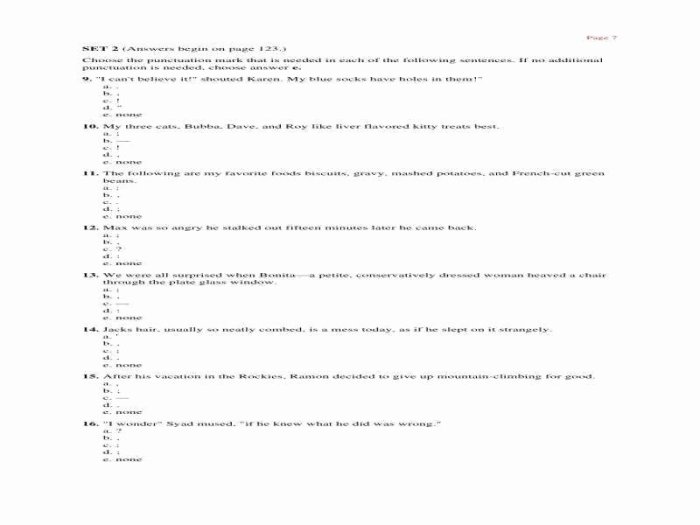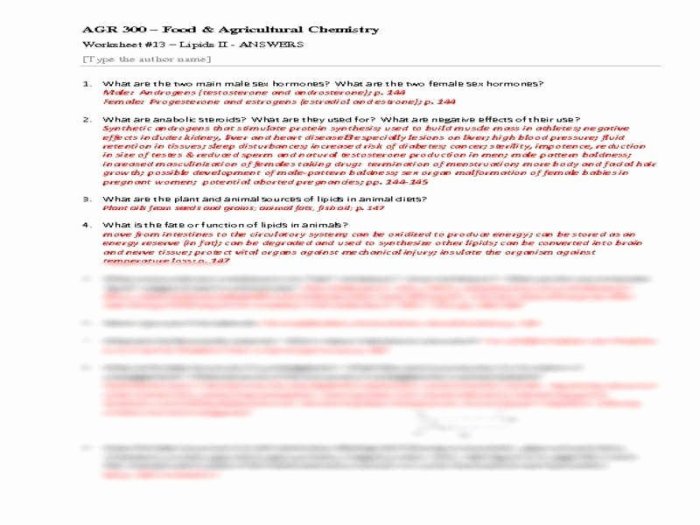Delve into the realm of Food Inc Questions Answer Key, where we unravel the mysteries and controversies surrounding the food industry. This comprehensive guide will shed light on the intricate practices, regulations, and consumer choices that shape our food system.
From the exposé of industrial food production to the challenges of food safety and ethical dilemmas, we’ll explore the complexities of feeding a growing population.
Food Inc. Overview

Food Inc. is a 2008 documentary film that investigates the corporate consolidation of the food industry and its impact on public health and the environment.
The film argues that the industrialization of food production has led to a number of problems, including:
- The rise of obesity and other diet-related diseases
- The decline of small farms and the loss of biodiversity
- The environmental degradation caused by factory farming
- The erosion of consumer choice and the concentration of power in the hands of a few large corporations
Main Themes
The main themes of Food Inc. are:
- The need for a more sustainable and equitable food system
- The importance of consumer awareness and activism
- The role of government regulation in protecting public health and the environment
Industrial Food Production
Industrial food production involves large-scale, mechanized farming and processing methods designed to maximize efficiency and profits. It has become the dominant form of food production globally.
Industrial food production utilizes various methods and practices, including:
- Monoculture farming:Growing vast areas with a single crop, which increases yields but reduces biodiversity and soil health.
- Heavy use of synthetic fertilizers and pesticides:These chemicals boost crop growth and control pests, but they can also pollute waterways and harm ecosystems.
- Genetically modified organisms (GMOs):Crops engineered to resist pests or herbicides, potentially reducing the need for chemical inputs but raising concerns about their long-term health and environmental effects.
- Industrialized livestock production:Animals are raised in confined, intensive conditions, often using antibiotics to prevent disease and growth hormones to accelerate growth.
- Large-scale processing and packaging:Food is processed and packaged in factories using automated machinery, often involving the addition of preservatives, additives, and artificial flavors.
While industrial food production has increased food availability and affordability, it has also raised significant environmental and health concerns.
Environmental Impacts
- Soil degradation:Monoculture farming and heavy chemical use can deplete soil nutrients and damage soil structure.
- Water pollution:Fertilizers and pesticides can runoff into waterways, causing eutrophication and harming aquatic ecosystems.
- Air pollution:Industrialized livestock production generates methane, a potent greenhouse gas, and ammonia, which can contribute to smog.
- Loss of biodiversity:Monoculture farming reduces the diversity of plant and animal species in agricultural ecosystems.
Health Impacts
- Increased obesity and chronic diseases:Processed foods often contain high levels of unhealthy fats, sugar, and salt, contributing to obesity, heart disease, and other chronic illnesses.
- Antibiotic resistance:Overuse of antibiotics in livestock production can lead to the development of antibiotic-resistant bacteria, posing a serious threat to human health.
- Foodborne illnesses:Industrial food production systems can increase the risk of food contamination, leading to outbreaks of foodborne illnesses.
- Nutritional deficiencies:Processed foods may lack essential nutrients found in whole, unprocessed foods.
Food Safety and Regulation
The food industry is heavily regulated by government agencies to ensure the safety of the food supply. These agencies set standards for food production, processing, and distribution to minimize the risk of foodborne illness.
Role of Government Agencies
- Establish food safety standards and regulations.
- Inspect food production facilities to ensure compliance with regulations.
- Investigate foodborne illness outbreaks and recall contaminated products.
- Provide guidance and education to food industry professionals.
Challenges and Limitations of Current Food Safety Regulations
While government agencies play a crucial role in ensuring food safety, there are challenges and limitations to the current regulatory framework:
- Complexity and Fragmentation:The food safety regulatory landscape is complex and fragmented, with multiple agencies involved at different levels of government.
- Resource Constraints:Government agencies may face resource constraints that limit their ability to effectively monitor and enforce food safety regulations.
- Rapidly Evolving Food Industry:The food industry is constantly evolving, making it challenging for regulations to keep pace with new technologies and practices.
- International Food Trade:Globalization and the increasing interconnectedness of the global food supply chain make it difficult to ensure the safety of imported foods.
Consumer Choices and Food Labeling
In the realm of food consumption, consumer awareness and informed decision-making hold paramount importance. Consumers play a pivotal role in driving the food industry, and their choices can profoundly impact the production, distribution, and consumption patterns of food products. Informed decision-making empowers consumers to make choices that align with their values, dietary needs, and health goals.
Food labeling serves as a crucial tool in facilitating informed decision-making. By providing consumers with accurate and comprehensive information about the contents, nutritional value, and potential allergens of food products, food labeling empowers them to make educated choices that meet their individual requirements and preferences.
The effectiveness of food labeling lies in its ability to promote transparency and accountability within the food industry, fostering consumer trust and confidence in the products they consume.
Need answers for Food Inc? While you’re at it, check out this handy Fahrenheit 451 answer key PDF to help you ace your next literature test. Then, come back and tackle those Food Inc questions like a pro!
Enhancing Consumer Awareness
Raising consumer awareness about the significance of food labeling and its role in promoting informed decision-making is essential. This can be achieved through various channels, including public education campaigns, media outreach, and school curricula. By equipping consumers with the knowledge and skills to decipher food labels effectively, we empower them to become active participants in shaping the food system and making choices that align with their values and aspirations.
Ensuring Accurate and Transparent Food Labeling
The effectiveness of food labeling hinges on the accuracy and transparency of the information provided. Regulatory bodies play a vital role in establishing and enforcing clear and consistent labeling standards to prevent misleading or deceptive practices. These standards should ensure that food labels accurately reflect the ingredients, nutritional content, and any potential allergens present in the product.
Furthermore, promoting industry-wide adherence to these standards fosters a level playing field, enabling consumers to make informed comparisons between different food products.
Empowering Consumers with Additional Information
Beyond the mandatory information required on food labels, providing consumers with access to additional information can further enhance their ability to make informed choices. This could include information about the origin of ingredients, production methods, environmental sustainability practices, and ethical considerations.
By empowering consumers with a comprehensive understanding of the food they consume, we enable them to make choices that align with their values and priorities.
Sustainable and Ethical Food Systems

In the face of growing concerns over environmental degradation and the well-being of farm animals, the need for sustainable and ethical food systems has become paramount. These systems prioritize practices that minimize ecological impact, ensure animal welfare, and promote social justice throughout the food chain.
Transitioning to more sustainable food systems offers numerous benefits, including reduced greenhouse gas emissions, improved soil health, and enhanced biodiversity. However, challenges such as increased production costs, consumer resistance to change, and the need for infrastructure investments must be carefully addressed.
Examples of Sustainable Food Production Practices, Food inc questions answer key
- Organic farming:Prohibits the use of synthetic pesticides, herbicides, and fertilizers, promoting biodiversity and reducing environmental pollution.
- Regenerative agriculture:Focuses on restoring soil health, sequestering carbon, and improving water retention through practices like no-till farming and cover cropping.
- Aquaponics:Combines fish farming with plant cultivation, utilizing the nutrient-rich water from the fish tanks to fertilize the plants, creating a closed-loop system.
- Urban farming:Utilizes rooftops, vacant lots, and other urban spaces to grow food, reducing transportation costs and promoting local food security.
Benefits and Challenges of Transitioning to Sustainable Food Systems
Benefits
- Environmental sustainability:Reduced greenhouse gas emissions, improved soil health, and enhanced biodiversity.
- Animal welfare:Improved living conditions and humane treatment of farm animals.
- Social justice:Fair wages and working conditions for food system workers, and equitable access to healthy food.
Challenges
- Increased production costs:Sustainable practices may require higher labor and input costs.
- Consumer resistance to change:Consumers may be hesitant to pay higher prices or alter their dietary habits.
- Infrastructure investments:Transitioning to sustainable food systems requires investments in infrastructure, such as organic certification programs and urban farming facilities.
Future of Food

The food industry is constantly evolving, with new innovations and trends emerging all the time. These advancements have the potential to revolutionize the way we produce, consume, and think about food.
One of the most significant trends in the food industry is the growing demand for sustainable and ethical food systems. Consumers are becoming increasingly aware of the environmental and social impacts of their food choices, and they are demanding more sustainable and ethical options.
Innovations in Food Production
Innovations in food production are also driving the future of food. These innovations include new technologies that can improve the efficiency and sustainability of food production, as well as new products that are healthier and more sustainable.
- Vertical farming: Vertical farming is a method of growing crops in vertically stacked layers, which can save space and water. This technology has the potential to revolutionize food production in urban areas.
- Precision agriculture: Precision agriculture uses sensors and data to monitor crop growth and soil conditions. This information can be used to optimize irrigation, fertilization, and pest control, which can lead to increased yields and reduced environmental impacts.
- Gene editing: Gene editing is a technology that can be used to modify the genes of crops. This technology has the potential to create crops that are more resistant to pests and diseases, and that are more nutritious.
Implications for Consumers and Society
The future of food has significant implications for consumers and society as a whole. These implications include:
- Increased access to healthy and sustainable food: Innovations in food production and distribution have the potential to make healthy and sustainable food more accessible to everyone.
- Reduced environmental impacts: Sustainable food systems can help to reduce the environmental impacts of food production, such as greenhouse gas emissions and water pollution.
- Improved public health: Healthy and sustainable food can help to improve public health by reducing the risk of chronic diseases such as obesity, heart disease, and diabetes.
Commonly Asked Questions: Food Inc Questions Answer Key
What is the main argument presented in Food Inc?
Food Inc argues that industrial food production methods prioritize profits over consumer health and environmental sustainability.
How does industrial food production impact the environment?
Industrial food production contributes to greenhouse gas emissions, water pollution, and soil degradation.
What are the limitations of current food safety regulations?
Current food safety regulations may not be comprehensive enough to address emerging foodborne illnesses and contaminants.
How can consumers make informed food choices?
Consumers can read food labels, research food production practices, and support local and sustainable farmers.